Exclusive: Raghu Rai On His 5 Fave Pics (Indira Gandhi Among Them)
World-famous photographer Raghu Rai explains his five favourite photos in Picturing Time: The Greatest Photographs of Raghu Rai published by Aleph Book Company. Order here.
-
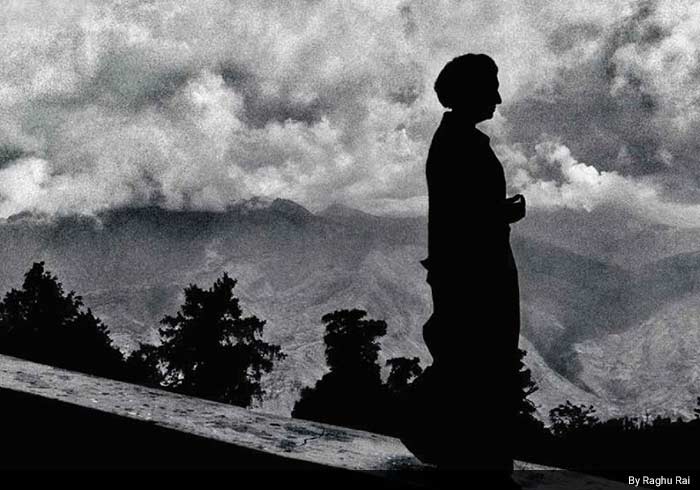 I was photographing Indira Gandhi almost every other day from 1967 onwards, when she became the Prime Minister. When I started doing this, I realized that if someone in the future didn't know who she was, and what a strong personality she was, what a tough leader she proved to be, perhaps they would realize that by looking at these photographs. I began to ask myself, does this picture stand the test of time by itself, for itself?
I was photographing Indira Gandhi almost every other day from 1967 onwards, when she became the Prime Minister. When I started doing this, I realized that if someone in the future didn't know who she was, and what a strong personality she was, what a tough leader she proved to be, perhaps they would realize that by looking at these photographs. I began to ask myself, does this picture stand the test of time by itself, for itself?
Mrs Gandhi loved the Himalayas. While she was in Shimla, I requested some time to photograph her. Her secretary, Mr Sharada Prasad, a wonderful man, arranged the session. I was taking pictures of her walking on the lawns, but after a while I stopped and she asked, 'Kya hua?' I said, 'Tasveer achhi nahin ban rahi.' She asked, 'Kya karna hai?' I asked her to climb on to the stone parapet that was blocking my view of the Himalayas. A chair was brought and she stepped on to it. What's interesting about this picture is her hands, they're in a certain mudra. -
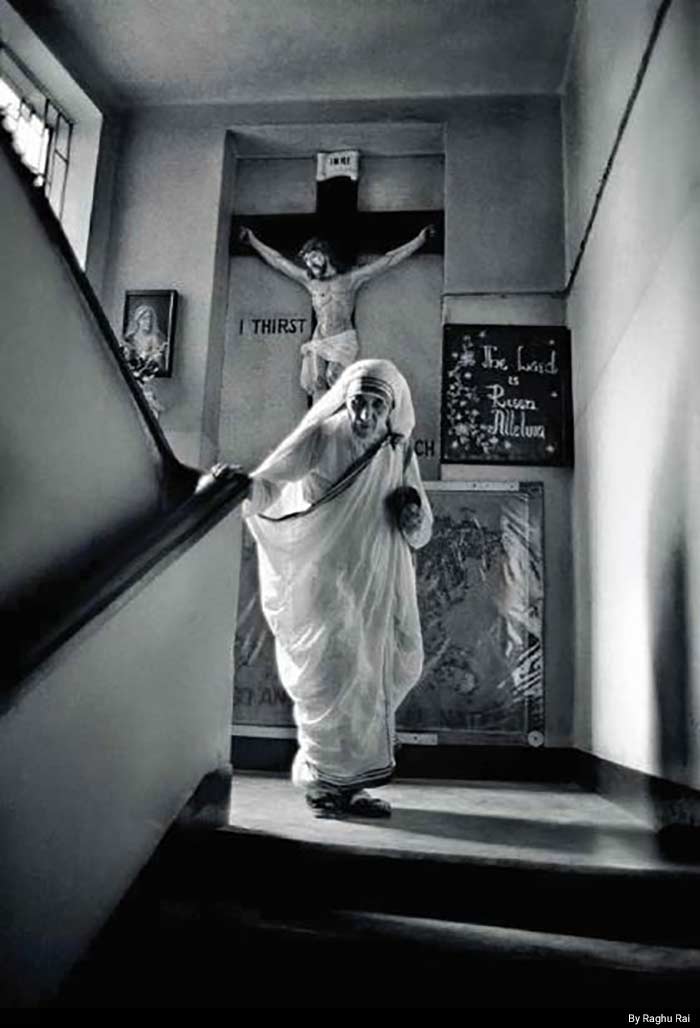 In 1970, I met Mother (Teresa) for the first time. Desmond Doig, one of my editors at The Statesman, rang me up one day from Calcutta saying that he had just met a great lady, and that it was imperative that I met and photographed her. This was among the first pictures I took of her, the beginning of a lifelong association that would have a profound influence on me.
In 1970, I met Mother (Teresa) for the first time. Desmond Doig, one of my editors at The Statesman, rang me up one day from Calcutta saying that he had just met a great lady, and that it was imperative that I met and photographed her. This was among the first pictures I took of her, the beginning of a lifelong association that would have a profound influence on me. -
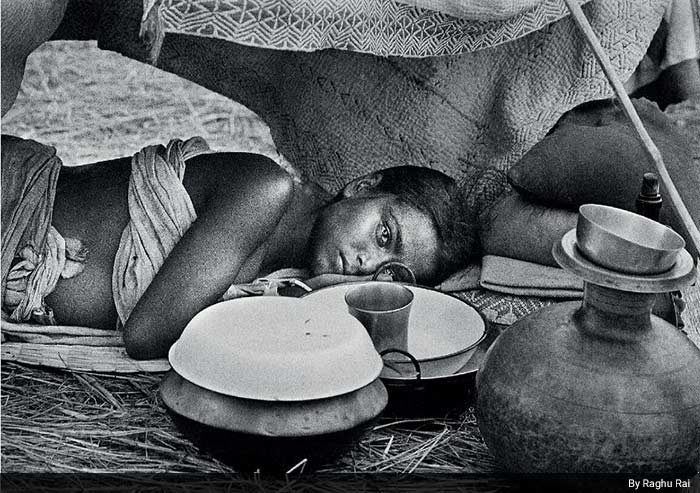 Thousands of refugees were crossing over the border into India. I went to Calcutta when the 1971 war broke out in, what was then, East Pakistan. Thousands of refugees began to pour into India across the border and the government was simply not equipped to deal with the catastrophe. The refugees had to fend for themselves, and lived inside empty sewage pipes, makeshift tents or out in the open.
Thousands of refugees were crossing over the border into India. I went to Calcutta when the 1971 war broke out in, what was then, East Pakistan. Thousands of refugees began to pour into India across the border and the government was simply not equipped to deal with the catastrophe. The refugees had to fend for themselves, and lived inside empty sewage pipes, makeshift tents or out in the open.
This was one of my most important assignments. There was a lot of paranoia at the time and Pakistan's propaganda was very strong. Nobody believed that millions of refugees were coming into the country. When international newspapers like the New York Times, Sunday Times, Guardian, Le Monde and Le Figaro gave the photographs half-page, if not full-page coverage, and TV channels interviewed me, it was the first time the extent of the tragedy became known to the world. -
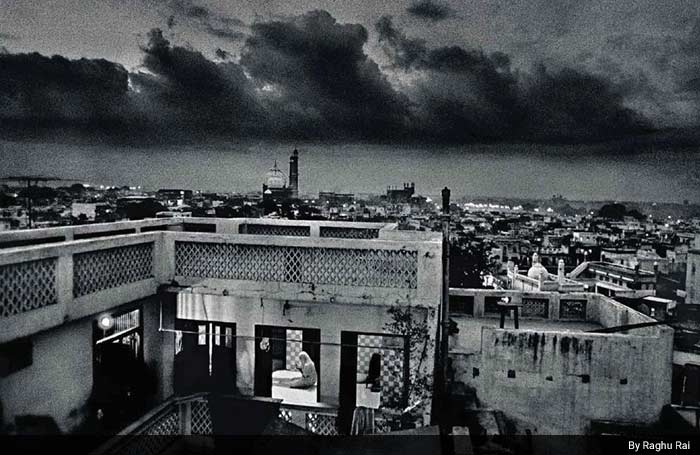 In 1982, I was doing my second book on Delhi and walking around Old Delhi. It's a place that has always been important to me because of its character, its architecture, the heritage and life in the streets and by-lanes-it's another world altogether. I had been taking pictures around Jama Masjid when Saeed Bhai, a local MLA, a tall nice gentleman approached me and asked what I was doing. He had noticed me earlier and was curious to know why I was wandering around the area with a camera. When I explained that I was doing a picture book on Delhi, and that Jama Masjid and Old Delhi were both special places to me, he asked me to follow him and promised that I would not be disappointed by what I saw.
In 1982, I was doing my second book on Delhi and walking around Old Delhi. It's a place that has always been important to me because of its character, its architecture, the heritage and life in the streets and by-lanes-it's another world altogether. I had been taking pictures around Jama Masjid when Saeed Bhai, a local MLA, a tall nice gentleman approached me and asked what I was doing. He had noticed me earlier and was curious to know why I was wandering around the area with a camera. When I explained that I was doing a picture book on Delhi, and that Jama Masjid and Old Delhi were both special places to me, he asked me to follow him and promised that I would not be disappointed by what I saw.
So we walked to his place through a maze of lanes and climbed to the roof and suddenly the entire city lay in front of me. On one side was Jama Masjid, to my right was the Red Fort, along with a splendid display of other buildings, all old and Mughal architecture, and on the other side was New Delhi - Connaught Place with its modern buildings and skyscrapers coming up. I think it was late August or early September, when the evenings get pleasant, and there were people everywhere, sitting on rooftops, children playing and flying kites. I took a lot of pictures before the sun went down. It was getting dark and I thought no point clicking now, the light was very low. Though I had taken a lot of photographs that day I was not satisfied, because nothing I had clicked was able to capture the strength and spirit of the enormous experience of standing where I was, above the city.
Just as I was coming down the stairs - and these were open steps, not covered from the top - I saw this lady praying in a house across from where I stood. I looked up and there were these clouds over Jama Masjid, I took a few quick pictures but I was scared because the light was low and it was slow exposure. Luckily, it wasn't a hundred per cent sharp, but sharp enough. 'Evening Prayer' won me a gold in an international competition and it got published as a full-page in The Guardian. -
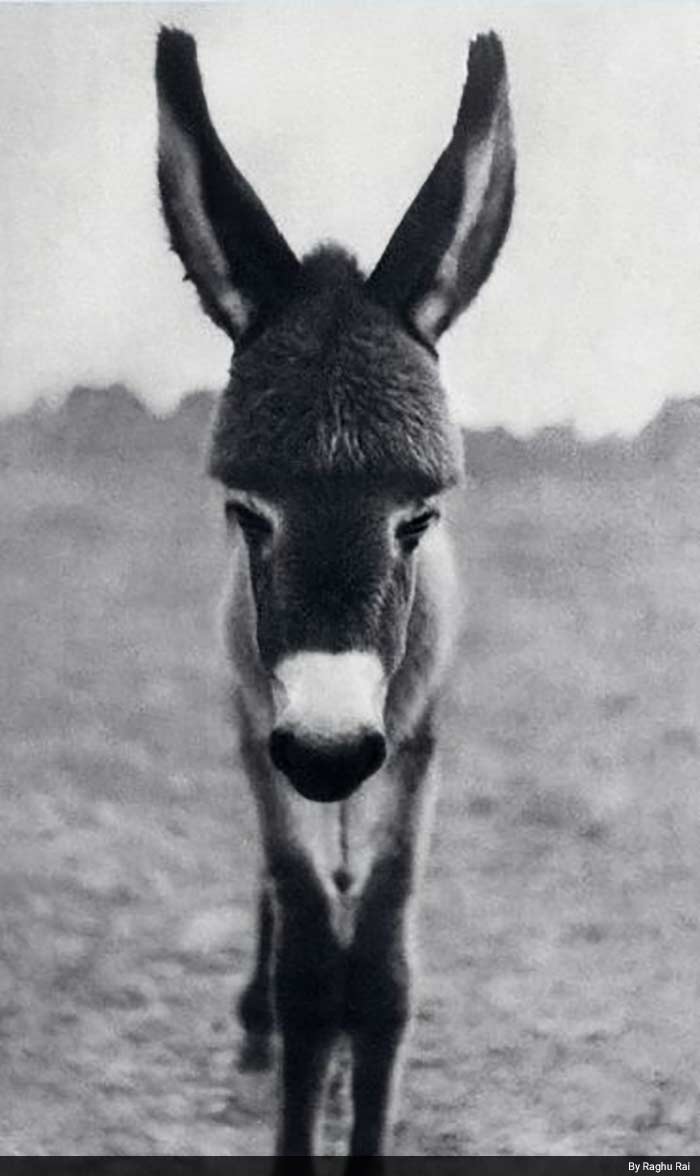 One of my brother's close friends, Yog Joy, originally a landowner/farmer was becoming a keen photographer. A very warm and gentle human being, he had come to visit Paul and was planning to go back to his village, about 50 km from Delhi, to visit his farm and take pictures. Since I liked him for being what he was, and since I wasn't doing anything at the time, I decided to go with him for two-three days and on a whim asked my brother to give me a camera. He loaded a film in an Agfa Super Sillete, a small camera, for me and briefly explained how to operate the exposure and focus.
One of my brother's close friends, Yog Joy, originally a landowner/farmer was becoming a keen photographer. A very warm and gentle human being, he had come to visit Paul and was planning to go back to his village, about 50 km from Delhi, to visit his farm and take pictures. Since I liked him for being what he was, and since I wasn't doing anything at the time, I decided to go with him for two-three days and on a whim asked my brother to give me a camera. He loaded a film in an Agfa Super Sillete, a small camera, for me and briefly explained how to operate the exposure and focus.
We reached Yog's village that afternoon. While he was photographing the village children in the streets, I stood around watching. On the other side, I saw a baby donkey and began to chase it, and this sight-of a grown man chasing a baby donkey - greatly amused the children. As I went closer to take a picture, the baby donkey started running and I began chasing it and the children had a hearty laugh. And then I deliberately began chasing the donkey to amuse the children further. Finally, the baby donkey grew exhausted and came to a standstill, and I took a picture and I got this close-up of its face in soft focus, my first photograph.
When I came back to Delhi, my brother got the film processed and much to my surprise, he picked up this image and said that it was a very good photograph. To which I said, ‘O yeah?' This was the picture my brother sent to The Times in London. In the mid 60s the Times used to print a half-page photo every weekend of something unusual, funny, strange or ironic. The picture editor there was Norman Hall, who went on to be editor of the British Journal of Photography annual and had previously edited the reputed Photography magazine in the UK where he famously published portfolios of master photographers of that time like Henri Cartier Bresson, Margaret Bourke White and Bill Brandt. He published it as a half-page picture in the paper with my byline and that was the beginning of my journey as a photographer.
Advertisement
Advertisement
